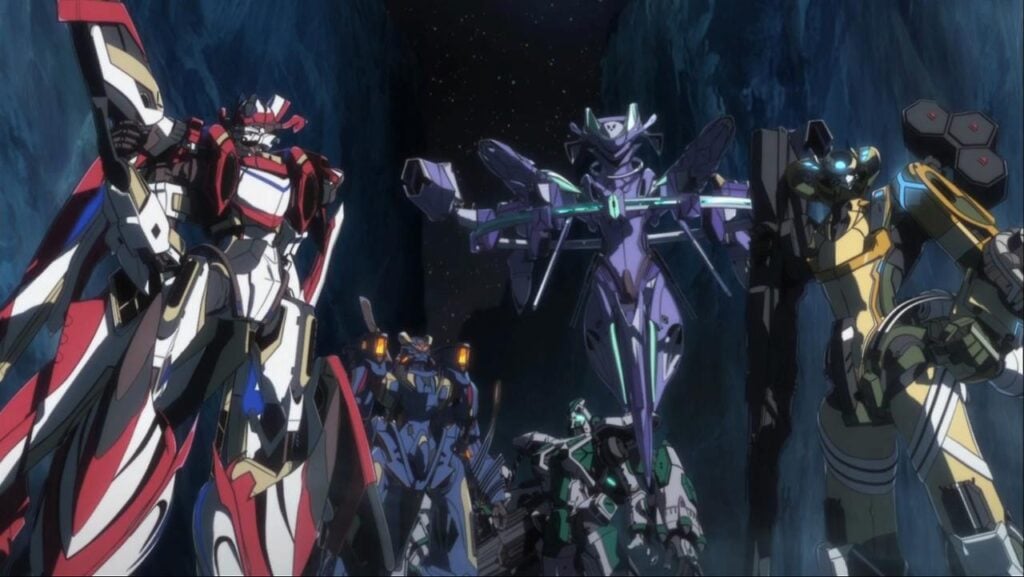
Anime Review: Majestic Prince – From Zero to Hero
It is not your destiny to fight…but it is in your genes!
It’s not only isekai protagnists that are your typical zero-to-hero type of characters, we got those in mecha too – and sometimes more often than you think. A rag-tag group of teenagers with no tragic background, just your average kids (well, maybe less than average) in a military school, suddenly got chosen to pilot state-of-the-art giant robots to save humanity. Sounds quite shounen-ish and very tropey, right? Well, you’re not wrong, but if done right, a normal setup can become interesting – and Ginga Kikoutai Majestic Prince managed to turn a traditional shonen story into something amazing!
Everything about Majestic Prince screams mediocrity and predictability, yet it still tell an awe-inspiring story through the growth of its main cast. The concept of a mecha team with specialized roles also isn’t the newest on the market, but it’s a solid ground to build up some character development if done right. And sometimes sticking to the books is a good way to go about it. And Majestic Prince focus on delivering a simple, straightforward and inspiring story, and rely on the amazing animation to get the attention of the audience.
Everything about Majestic Prince screams mediocrity and predictability, yet it still tell an awe-inspiring story through the growth of its main cast. The concept of a mecha team with specialized roles also isn’t the newest on the market, but it’s a solid ground to build up some character development if done right. And sometimes sticking to the books is a good way to go about it. And Majestic Prince focus on delivering a simple, straightforward and inspiring story, and rely on the amazing animation to get the attention of the audience.
Ginga Kikoutai Majestic Prince is a 24-episode tv series by Kadokawa and Bandai, with CG animation by the god-like studio Orange. The story focuses on a 5-people team of cadets in a military academy. And they sucks so bad that everyone call them team Rabbit because, well, they suck. But out of the blue, they were summoned by the higher-ups and given state-of-the-art mecha called AHSMB cand sent off to the front line. Our heroes and heroines are shocked that they would send cadets – and the worst ones at that – into the frontline. However, the “red ranger” Izuru Hitachi think this is a chance to fulfill his dream of becoming a hero that save others. And with his fighting instinct screaming amidst the battle, his AHSMB charge into battle, and the rest of the team follow, and thus begins the saga of the “Majestic Prince”.
Story-wise, Majestic Prince (or MJP for short) is a classic coming-of-age story of a group of misfits that got stuck with each other thanks to their idiosyncrasies. Each member of the team has their own dreams and insecurities as well. Izuru is a hopeless naive and idealistic boy, Asagi is a worrywart despite having good skills, Kei is the honor student type but has abysmal cooking skills (it seems every series need one of those), Suruga is a weapon otaku that doesn’t know when to shut up, and Tamaki is another hopeless romantic that always shoot way above her league. A very typical and ragtag collection of misfits, but together they bring out the best in each other and the whole is stronger than the sum of its part. When the situation calls for it, everyone respectively step up to the role, even if there are some rough patches along the way. Seeing each team member grow after each passing episodes is very heartwarming and inspirational. Of course the main character is still “red senshi” Izuru and it is his idealistic dream that sorta string everyone along on his naive heroism. But sometimes a bit of simplicity and “just do it” attitude is the best approach to a challenge.
Story-wise, Majestic Prince (or MJP for short) is a classic coming-of-age story of a group of misfits that got stuck with each other thanks to their idiosyncrasies. Each member of the team has their own dreams and insecurities as well. Izuru is a hopeless naive and idealistic boy, Asagi is a worrywart despite having good skills, Kei is the honor student type but has abysmal cooking skills (it seems every series need one of those), Suruga is a weapon otaku that doesn’t know when to shut up, and Tamaki is another hopeless romantic that always shoot way above her league. A very typical and ragtag collection of misfits, but together they bring out the best in each other and the whole is stronger than the sum of its part. When the situation calls for it, everyone respectively step up to the role, even if there are some rough patches along the way. Seeing each team member grow after each passing episodes is very heartwarming and inspirational. Of course the main character is still “red senshi” Izuru and it is his idealistic dream that sorta string everyone along on his naive heroism. But sometimes a bit of simplicity and “just do it” attitude is the best approach to a challenge.
We also can’t skip the supporting cast, as they also contribute a lot to the character, although they are pretty one dimensional. The captain is your typical strict on the outside, but kind (and childish) on the inside. The mechanic gal is basically a walking fanservice, and MJP actually did something out of the ordinary: each Rabbit team member get his/her own supporting team with different quirks that at first glance cannot mesh with that pilot’s personality, but gradually they provide some value, albeit small, to their respective pilot.
Now we get to the villain. Well, they are as textbook as you can get. An alien race hellbent on killing and pillaging to take whatever they can, in this case – genes – to further their survival. And of course, they treat other weaker species like trash and take them for granted. Of course, amongst the Wulgaru (the alien race), there are certain individuals that rose among the rest with their own ideal. Most notably Jiart and Princess Teoria. Jiart is pretty much a lonewolf that does whatever he pleases and seek to fight strong oponent only, whereas Teoria is the opposite, wanting to have peace with human and defected to Earth and helped build the ASHMBs. While being a support character, Teoria has quite a profound impact on Izuru in the latter half of the series. And Jiart is basically Izuru’s rival that seek him out at every twist and turn.
Now we get to the villain. Well, they are as textbook as you can get. An alien race hellbent on killing and pillaging to take whatever they can, in this case – genes – to further their survival. And of course, they treat other weaker species like trash and take them for granted. Of course, amongst the Wulgaru (the alien race), there are certain individuals that rose among the rest with their own ideal. Most notably Jiart and Princess Teoria. Jiart is pretty much a lonewolf that does whatever he pleases and seek to fight strong oponent only, whereas Teoria is the opposite, wanting to have peace with human and defected to Earth and helped build the ASHMBs. While being a support character, Teoria has quite a profound impact on Izuru in the latter half of the series. And Jiart is basically Izuru’s rival that seek him out at every twist and turn.
On to animation, the 2D human character is pretty decent. The art-style is simple, and you can hardly recognize the characters are designed by Hiraishi. This is one of the few animes that looks nothing like Seed’s Hirai-face. Thanks to the more simplistic style, the 2D animation is quite good. But the highlight of the anime is undoubtedly the 3DCG by Studio Orange. Many mecha fans abhor CG and only watches 2D, but MJP can definitely change your mind about that. The mecha action is smooth and fluid with a very high fps. The camera work is definitely one of Orange’s strong forte, as we whiz around the battles through dynamic angles that bring us very close to the battle, making us feel the adrenaline of the fight. Furthermore, with the AHSMB concept of being able to act upon its pilot’s “Instinct”, their human-like movement is very fitting and that helps add another layer of mechanical fluidity to the animation. Even though the show is made in 2014, it is still the best CG anime in history of mecha for me.
The AHSMBs are designed by mechanical designer Hiroshi Tani – which is a relatively unfamiliar name with mecha fans. Even so, he did a very amazing job with the mecha design – perfectly creating specialized designs for each pilot. It’s basically giant Kamen Rider or Super Sentai where each mech has a distinct look and roles. The concept of each unit having the same “core unit” inside and equip different wear parts is also pretty cool. Of course, the main character mech has to be the most “humanoid” and heroic.
And the Red Five is exactly that. It looks sleek, cool and it has a pair of Freedom Gundam wings on the back, which just double the coolness. Well, if you take a really good look (or buy the model kit), you can see its feet is actually pretty funny (like a goat), but on-screen it looks perfectly human-like. Blue One is basically the secondary rider with basically the same silhouette as Red Five just…not as much cool stuff. But its swordplay is really impressive. Gold Four is the designated gun nuts and trigger happy unit, with a very interesting sniping mechanism that I don’t think I’ve seen anywhere. Rose Three is the tank and charge unit, which is a huge high-mobility unit that is used to open a path in enemy’s formation. Make no mistake, it can beam spam like Jesus Yamato on a hot day, and its fighting style really suit Tamaki. Purple Two is the information control and processing unit, basically a non-combat commander type. Each unit has a distinct design that really set it apart from each other and highlight the difference in their functionality.
The AHSMBs are designed by mechanical designer Hiroshi Tani – which is a relatively unfamiliar name with mecha fans. Even so, he did a very amazing job with the mecha design – perfectly creating specialized designs for each pilot. It’s basically giant Kamen Rider or Super Sentai where each mech has a distinct look and roles. The concept of each unit having the same “core unit” inside and equip different wear parts is also pretty cool. Of course, the main character mech has to be the most “humanoid” and heroic.
And the Red Five is exactly that. It looks sleek, cool and it has a pair of Freedom Gundam wings on the back, which just double the coolness. Well, if you take a really good look (or buy the model kit), you can see its feet is actually pretty funny (like a goat), but on-screen it looks perfectly human-like. Blue One is basically the secondary rider with basically the same silhouette as Red Five just…not as much cool stuff. But its swordplay is really impressive. Gold Four is the designated gun nuts and trigger happy unit, with a very interesting sniping mechanism that I don’t think I’ve seen anywhere. Rose Three is the tank and charge unit, which is a huge high-mobility unit that is used to open a path in enemy’s formation. Make no mistake, it can beam spam like Jesus Yamato on a hot day, and its fighting style really suit Tamaki. Purple Two is the information control and processing unit, basically a non-combat commander type. Each unit has a distinct design that really set it apart from each other and highlight the difference in their functionality.
The OST of the show is pretty good. The opening and ending are both slow ballad that sounds quite melancholic and somber, unlike some more hype track in most modern Bandai/Sunrise mecha show. The BGM during the fight scenes are quite intense however. They really get your heart racing for the fast-paced giant robot action.
Overall, Ginga Kikoutai Majestic Prince is a very basic series about the coming-of-age of a gang of teenagers. Even though they are put into the middle of a war, their action can also inspired real world people as they go through the same challenges that we face everyday. The production quality is amazing and remain one of the best mecha action series in the history of anime. If you want an entertaining series about interesting characters that doesn’t go too heavy on the political or philosophy aspect etc… then Majestic Prince is the perfect series for you!
Overall, Ginga Kikoutai Majestic Prince is a very basic series about the coming-of-age of a gang of teenagers. Even though they are put into the middle of a war, their action can also inspired real world people as they go through the same challenges that we face everyday. The production quality is amazing and remain one of the best mecha action series in the history of anime. If you want an entertaining series about interesting characters that doesn’t go too heavy on the political or philosophy aspect etc… then Majestic Prince is the perfect series for you!
Check out more recommendations:

Let’s turn and burn! A movie about futuristic stealth fighter and AI-jet. Sounds familiar? This is Macross Plus live action with a sprinkle of Ace Combat and Yukikaze.

The first Super Electromagnetic robot! Combatller V combined a fast-paced Monster-of-the-week with dramatic development, taking advantage of the 5-man team format.

A combination between Japanese myths and mecha. An intricate relationship between 2 girls and one guy, with intense Super Robot combat in-between.

An original Toku-themed anime that is packed with action. While facing the challenges of full 3DCG animation, Shikizakura delivered an inspiring and emotional story for would-be heroes.

A chance to see the A.D Police from Bubblegum Crisis in honorable action. Two detectives take on cases of rampage Boomers, unraveling a sinister plot that can change the world.

An apocalyptic tale of burning sand and monsters. A young man set out for vengeance, acquiring the usual hot chick and robot buddy on the way.

A refreshing tale about how the best of friends became sworn rivals. A vibrant, well animated movie where characters shine through their own merits, and bring a new wind to the franchise.

The fruit of collaboration with Japan Air Self-Defense Force, the air combat scenes of this anime is what set it apart

A futuristic world where sports are played in the most dirty way possible, a team of good-hearted robots gather to prove that good sportsmanship can prevail in any era.

Despite often being overlooked by newer fans, After War Gundam X is a must watch for any Gundam lovers.

The fusion of Man and Beast and Machine. Dancouga became an iconic Super Robot that merged aspects of Super Robot with Real Robot.

Passion makes satisfaction. A group of student show what they can accomplish with a mecha short film that leaves you desperately wanting more!

The end of a legend dragged through the mud from the peak of success. Studio Gainax is a regrettable case where high execs ruin a respectable legacy.

A man thrown into a stranger world naked ended up fighting against god. What more could you ask from a mecha show? Eh…maybe better writing?

With utmost love for the Super Robot Wars series, Obari crafted one of the most prominent Mecha anime of modern generation.

A seemingly impossible task of building Mazinger Z hangar in real life. A ragtag team of a planning company assembled the Fantasy Division to turn fiction into reality.

A light-hearted series that turned into intense space opera. The Girl Who Leapt Through Space leaps through many genre to deliver a unique experience and turn everyone’s expectation upside down.

A desolate planet now submerged in liquid. A totally unique and fresh mecha series where all the robots are underwater. Oh and there’s also a talking whale.

A love story that spans through 12000 years. The war between Angels and humans fueled by passionate emotions. Shoji Kawamori shows us why he’s the master of the sky.

What happens if we mix Mahou Shoujo, Mecha and Battle Royale into one? We get Granbelm – an emotional story about the lives of young girls entangled in an ancient war.

In the city of smoke and steam, a young kid works as a detective alongside his nurse and butler to protect the peace. An old classic for fans of the steampunk style.

The 2nd season of the lovely Mass-Produced Riko series. Join Riko and co as they embark on an all new venture, while drawing interesting lesson from building plastic models.
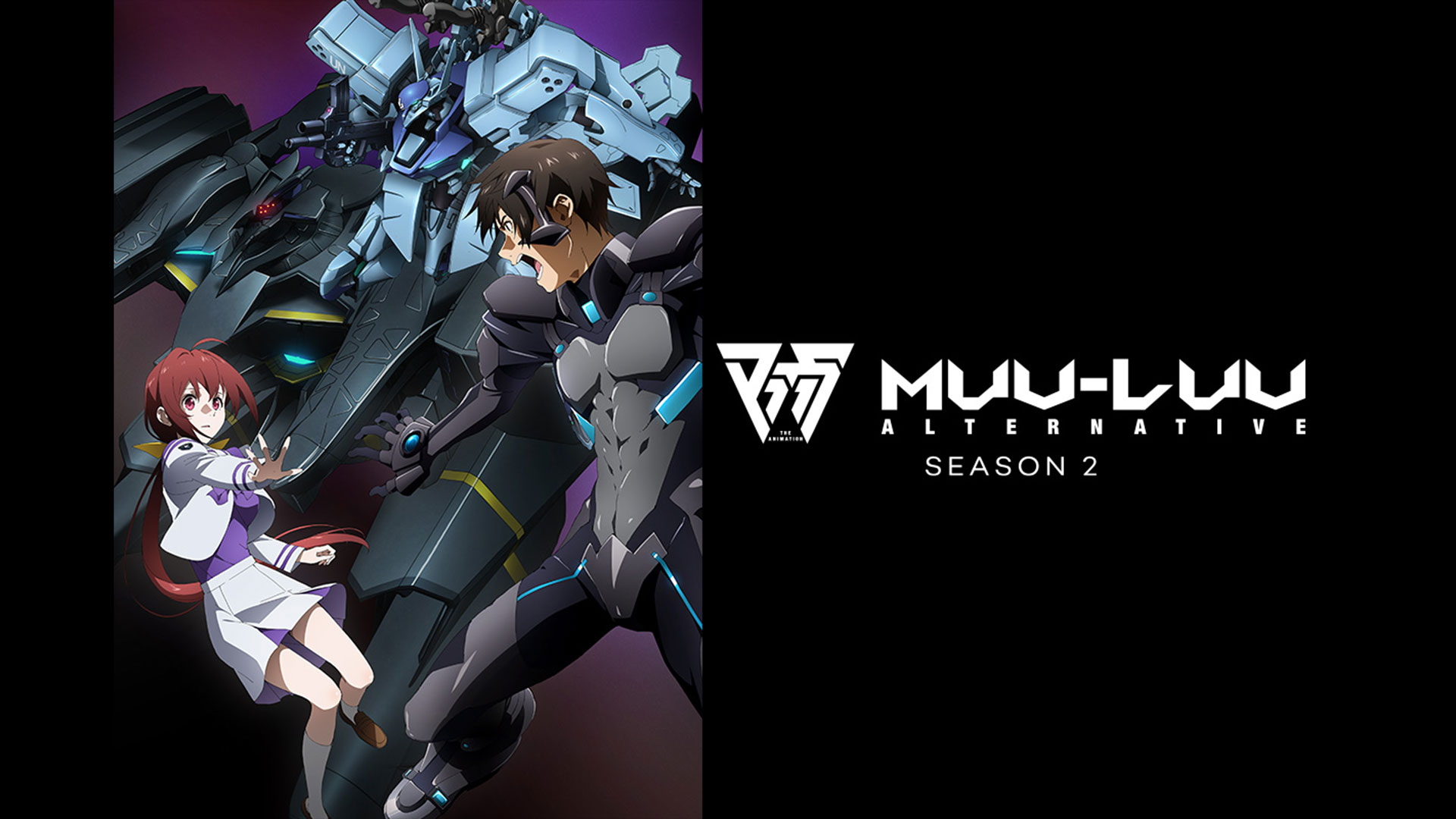
The long-awaited continuation of the mecha isekai of pain. Season 2 of Muv-Luv Alternative is definitely trying to woo you by slamming intense scenes at you – but is it worth it?

One of the most difficult to adapt Mecha series, Muv-Luv Alternative anime started off with a questionable season, but you should still check it out.
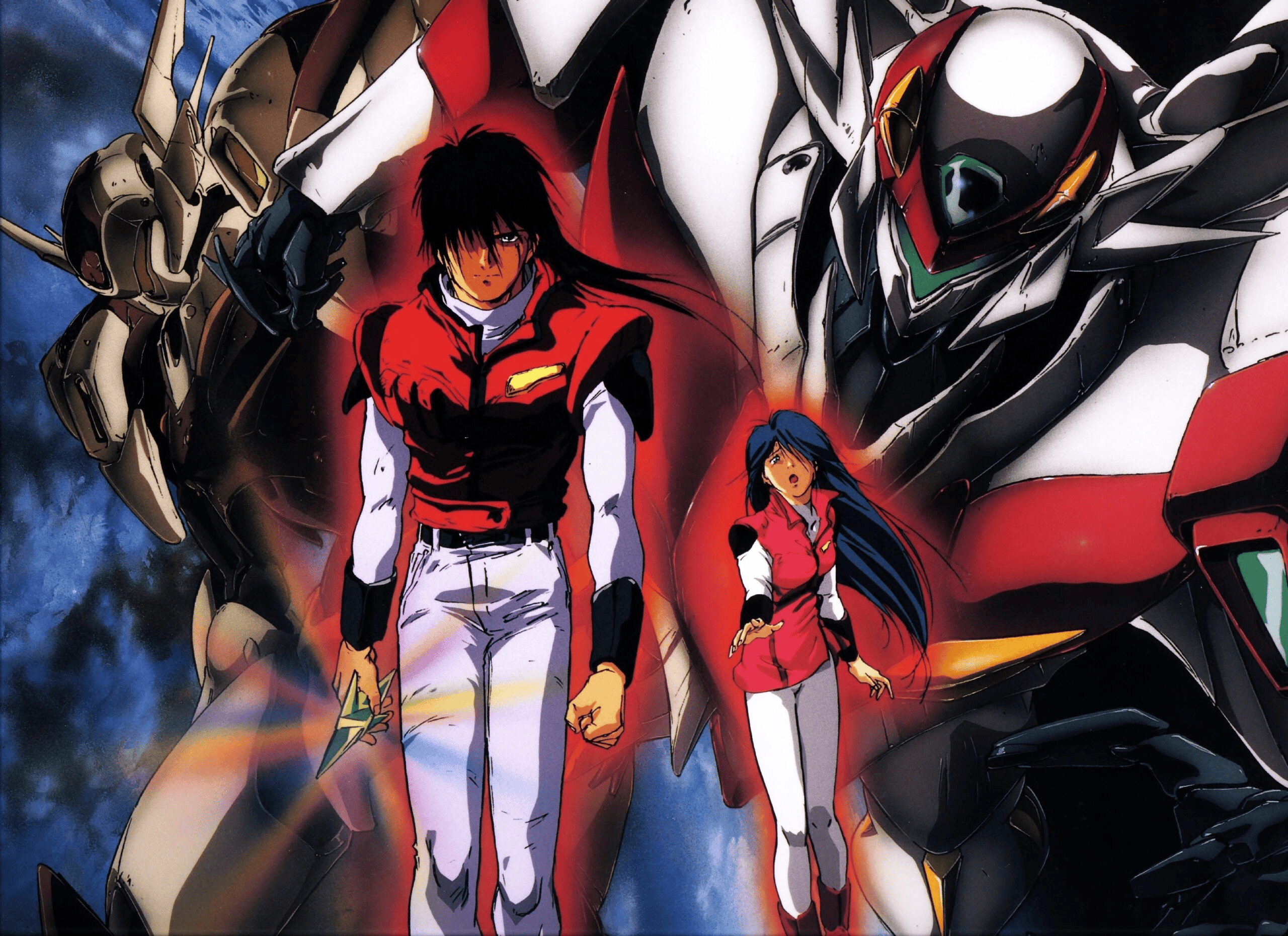
A remake of another Tatsunoko hero. The Space Knight returns with a completely new story, design and brings us on an emotional journey of a tragic hero.

An OVA that took place between the movie and Exodus, Behind The Line shows us how the characters mature throughout the season, with a hint of retrospective nostalgia.

The continuation of the hot-blooded saga, this time filled with emotional drama and even more badass action. A great video game adaptation but not without flaws.

The long awaited legend’s return that satisfy all mecha fan’s longing for a good game. Armored Core 6: Fires of Rubicon is an experience you have to play to believe.

Universes collide as the cast of Gridman and Dynazenon is caught in a dimensional anomaly. But what’s more troubled is Yuuta – who has to become Gridman again with a troubled heart.

When you talk about the most badass mecha, you have to mention SRW OG and Masami Obari. And when these two combine, you get the best SRW anime of all time.
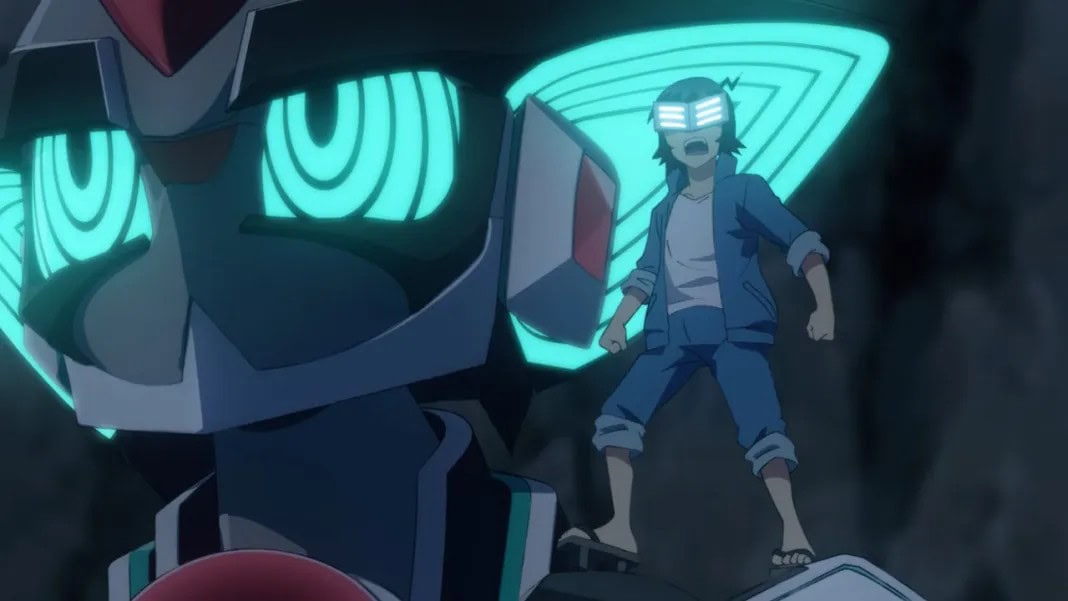
A unique series where the true pacifism versus justice. A bold premise and interesting gimmick make Planet With a very selective series in terms of audience – but it definitely deserves a chance.

From the studio that created Buddy Complex and Valvrave, Cross Ange is another Sunrise’s original that challenges the limit of its audience once more .

What will you do if you’re teleported to a time with giant grotesque monsters? For teenage student Daisuke Doujima, it’s a perfect chance for him to become a hero, and a saviour. But can he?
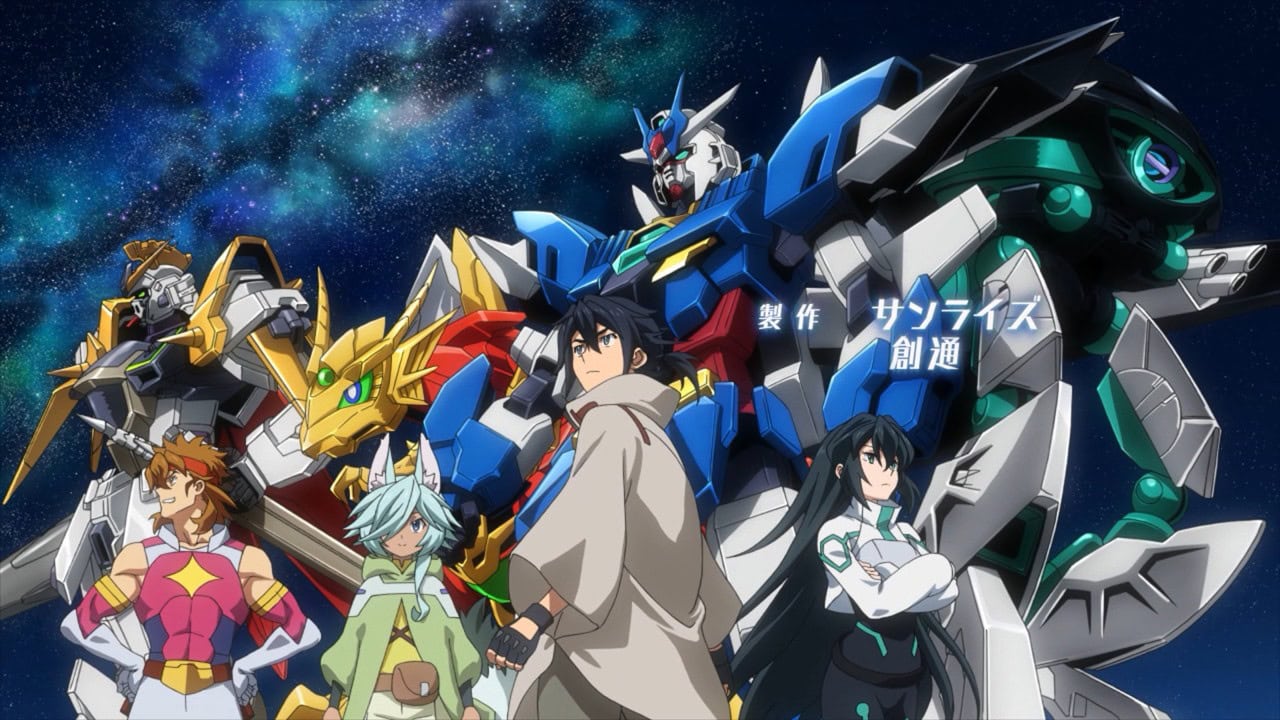
After 2 lukewarm series, Gundam Build rose to form again with Re:Rise. A story with deep characterization for a diverse and likeable cast and awesome Obari action.

Time to go digital! Build series is going full SAO and virtual with Build Divers – a light-hearted series and fun to enjoy without the need to complicate things.

The Super Graviton God is back! And this time the threat just got more vile. But Gravion also receive an upgrade…in true Obari fashion. Let’s see how the sequel holds up!

Following GBF, Sunrise wanted to capture the magic with TRY. However, they fell just short of greatness but still create a series with amazing Gunpla battles.
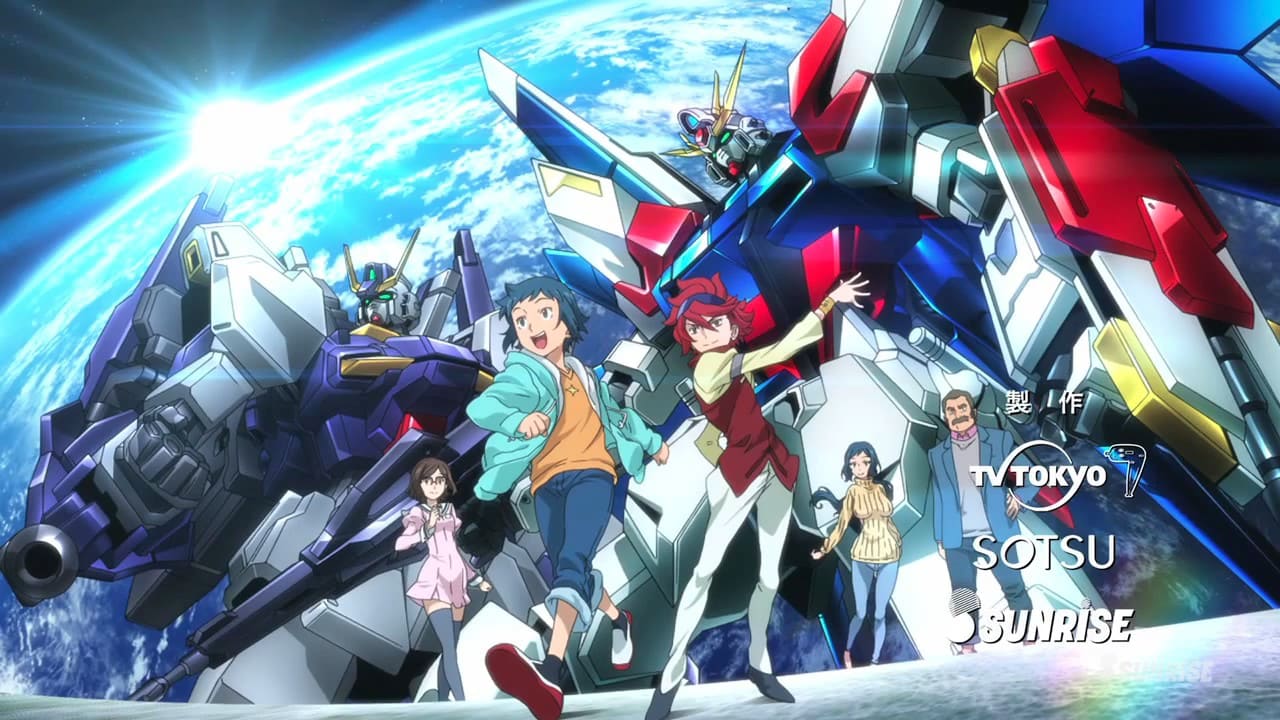
A hobby turned combat sport. Sunrise’s effort to attract new fans turned into a compelling series with gorgeous battles featuring iconic MS from the franchise.

The first animated Build series, Beginning G opened up new venues and excitement for the hobby, with light-hearted yet intense traditional MS battle.

The shortest tv series Gundam ever, but was one of the most popular. G-Witch put Gundam back on the mainstream map, but do fans love it like non-fans do? The answer is quite divisive!

A heavy-weight in Masami Obari’s repertoire. Choujuushin Gravion is average in production quality, yet it is imbued with the spirit of the most badass over-the-top director of all time.

Do you want a Gundam series with a brighter tone but still has banger battles? Then Metal Armor Dragonar is a perfect series for you!

A Super Robot versus Alien mecha series, but this time it’s also infused with the intricacies of human’s most sacred bond: Marriage. Godannar put that relationship to the test!

A series about building regular model kit, and using them to find inspiration in life. A very uplifting and chill series for mecha fans to change their perspective on their hobby.

The sequel to SEED – a series that brought Gundam on top of the radar. Destiny is a sequel that earned both the intense love and hate within the fandoms.

The 3rd Tokusatsu series by Director Anno Hideaki. Shin Kamen Rider revisits the core message of what it means to be a Rider and to fight for justice while putting a modern spin on it.

The most ambitious superhero crossover is here! Infini-T Force is where heroes from different universes come together to save a girl and protect the multiverse.

An anime adaptation of a sci-fi novel with the same name, Yakitori really stir up the scene with its unusual storytelling and animation style. However, the characters really hold the series up.

A Fafner novel written by Tow Ubutaka – the person who understand Fafner the most. Explore Kazuki’s POV and his relationship in a way you’ve never seen before.

After the Transformers wave subsided, Takara made a bold move by partnering with Sunrise to produced one of the best Mecha franchise ever. Start the Brave journey with Exkaiser!



